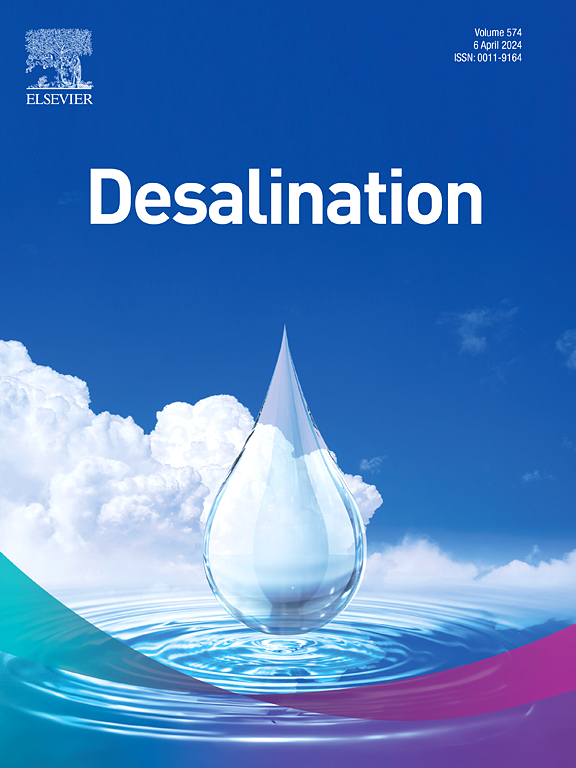氮硫共掺杂蓝藻生物炭高效电容去除废水中的Pb2+
IF 9.8
1区 工程技术
Q1 ENGINEERING, CHEMICAL
引用次数: 0
摘要
电容去离子(CDI)是一种很有前途的、节能的去除水中铅等重金属离子的技术。在本研究中,从已知具有生态危害的蓝藻固氮藻类中开发了一种新型的氮硫共掺杂生物炭(NSBAC)。在电流密度为0.5 a /g时,NSBAC电极的比电容达到270.69 F/g,具有优异的电容性能。在CDI体系中,NSBAC对Pb2+的吸附量为30.42 mg/g (1.2 V, 100 mg/L),经过10次吸附-解吸循环后仍保持93.1%的初始吸附量。此外,密度泛函理论(DFT)计算表明,与单一N掺杂相比,N, s共掺杂引入了更多的缺陷和边缘N位点,显著提高了NSBAC对Pb2+的吸附能力。该研究阐明了双杂原子掺杂的协同效应,为基于cdi的Pb2+去除技术提供了新的见解。本文章由计算机程序翻译,如有差异,请以英文原文为准。

Nitrogen and sulfur co-doped cyanobacteria-derived biochar for efficient capacitive removal of Pb2+ from wastewater
Capacitive deionization (CDI) has emerged as a promising and energy-efficient technique for the removal of heavy metal ions such as lead (Pb2+) from aqueous solutions. In this study, a novel nitrogen and sulfur co-doped biochar (NSBAC) was developed from cyanobacteria‑nitrogen-fixing algae known for their ecological hazards. The NSBAC electrode exhibited excellent capacitive performance with a specific capacitance of 270.69 F/g at a current density of 0.5 A/g. In the CDI system, NSBAC achieved an outstanding Pb2+ adsorption capacity of 30.42 mg/g (1.2 V, 100 mg/L) and maintained 93.1 % of its initial capacity after ten adsorption-desorption cycles. Furthermore, density functional theory (DFT) calculations revealed that N, S-co-doping introduces more defects and edge-N sites compared to single N-doping, significantly enhancing the Pb2+ adsorption capability of NSBAC. This study elucidates the synergistic effects of dual heteroatom doping and provides new insights for CDI-based Pb2+ removal technologies.
求助全文
通过发布文献求助,成功后即可免费获取论文全文。
去求助
来源期刊

Desalination
工程技术-工程:化工
CiteScore
14.60
自引率
20.20%
发文量
619
审稿时长
41 days
期刊介绍:
Desalination is a scholarly journal that focuses on the field of desalination materials, processes, and associated technologies. It encompasses a wide range of disciplines and aims to publish exceptional papers in this area.
The journal invites submissions that explicitly revolve around water desalting and its applications to various sources such as seawater, groundwater, and wastewater. It particularly encourages research on diverse desalination methods including thermal, membrane, sorption, and hybrid processes.
By providing a platform for innovative studies, Desalination aims to advance the understanding and development of desalination technologies, promoting sustainable solutions for water scarcity challenges.
 求助内容:
求助内容: 应助结果提醒方式:
应助结果提醒方式:


